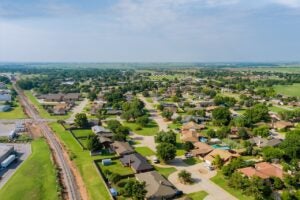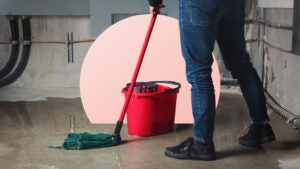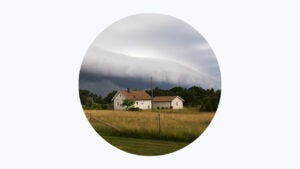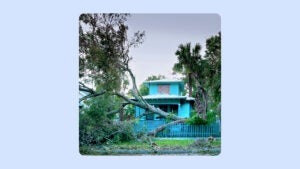Homeowners concerned about extreme weather and savings

Key takeaways
- 57% of Americans reported incurring costs over the last decade due to extreme weather.
- 46% of homeowners say that not having enough saved to cover an emergency repair is their top concern when it comes to dealing with extreme weather.
- Insurance, personal loans, home equity loans and home equity lines of credit can help you mitigate the costs of home repairs due to extreme weather damage.
Inflation has been cooling off over the last several months, but it’s still nowhere near the Fed’s 2 percent target — something that could persist until 2025.
The combination of rising interest rates and higher prices for just about anything, has caused strains in Americans’ budgets across the nation. As a result, many homeowners are feeling uneasy about the state of their savings and how to cover emergency repairs due to extreme weather.
Close to half of homeowners are concerned about savings and emergency repairs
A recent survey by property insurer Hippo, revealed that over half of homeowners (53 percent) ignored the impacts of extreme weather in their area prior to purchasing a home.
With climate-related disasters becoming more frequent over the last decade, this could mean substantial dents in homeowners’ budgets. As a result, 46 percent of the surveyed said that their top concern when it comes to weather preparedness is not having enough saved to pay for emergency repairs.
According to a Bankrate survey, more than one in two Americans (57 percent) reported incurring costs due to extreme weather over the last 10 years. That same amount foresees that extreme weather events, as well as climate and environmental changes, will negatively impact their finances in the next decade. Close to a quarter of them also say the effects will be “very” negative.
What’s more, only 43 percent of Americans feel confident about covering an unexpected $1,000 expense with their savings. Meanwhile, over a quarter of homeowners reported spending over $4,000 in emergency repairs over the last 12 months. This certainly could mean trouble, especially during the winter months, with the increased risk of damage due to flooding, hail, ice and snow.
Average cost of home repairs due to winter weather damage
Over the last five years, winter storm frequency in the U.S. has increased by an average of 4.3 percent, causing over $40 billion in damages. The table below shows what homeowners spend on average on winter weather-related repairs by damage type.
| Type of damage | Average repair cost |
|---|---|
| Hail | $3,000-$12,000 |
| Ice and snow | $200-$1,200 |
| Mold | $1,500-$3,500 |
| Thunderstorm | $2,800-$5,500 |
| Tree | $1,500-$5,000 |
| Water | $2,000-$5,000 |
Source: Fixr.com
How to pay for emergency repairs
Although some emergency repairs only cost a couple hundred dollars, depending on the severity, that cost can go up to $10,000 or more. Having a homeowners insurance policy is the first line of defense when it comes to covering emergency repairs, especially those caused by severe weather. That said, sometimes you may need more than just a basic policy to minimize out-of-pocket costs.
“With extreme weather damage becoming more common, homeowners should carefully review their policy each year to understand any changes to their coverage. Homeowners insurance typically covers damage to your home and belongings caused by specific weather events or perils,” Steve Wilson, director of Underwriting at Hippo, says.
“Depending on your location, certain providers may not cover severe weather damage or may require that customers retain a greater proportion of potential losses, compared to prior policy terms. For instance, in areas where wind or hail events have become more frequent, many homeowners may need to purchase additional coverage. In these cases, windstorm and flood insurance are separate policies that homeowners can purchase to carry some of the financial load,” he adds.
Other ways you can pay for emergency repairs caused by extreme weather, include:
- Personal loans: These loans are unsecured and can have fixed rates under 7 percent, with repayment terms of 24 to 84 months, in most cases. These loans can be a lifesaver to pay for emergency repairs as many lenders offer same- or next-day funding. But to get the best rates, you’ll need to have good to excellent credit.
- Home equity loans: A type of second mortgage, home equity loans currently have an average interest rate of 8.93 percent. These loans are better suited for those who have at least 15 percent of equity in their homes and are in need of a large sum of money to pay for major renovations.
- Home equity lines of credit (HELOCs): Just like home equity loans, HELOCs are another type of second mortgage that require you to have between 15 percent and 20 percent of equity in your home to be eligible. Although their rates sit slightly higher than those of home equity loans at 10.04 percent, they are a better option for those who don’t have a set budget for repairs, as you can borrow as you go.
You may also like

Closing costs in Oklahoma: Who pays for what

Does homeowners insurance cover basement flooding?

Extreme weather’s financial effect on homeownership



